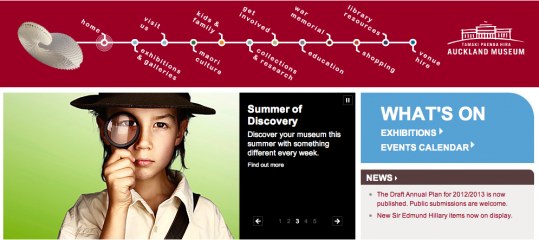Russell Briggs, Director of War Memorial and Commemoration In Auckland, New Zealand, announces Centenary plans.
In a conversation with the IWM’s Centenary Partnership Programme, Russell Briggs talks about the New Zealand’s Auckland War Memorial Museum’s plans for the Centenary.
The following is taken from the interview and can be found on the Partnership Programme website:
Whats your name, where do you work and whats your role there?
Im Russell Briggs, from The Auckland Museum in New Zealand. I have a brand new title this year Director, War Memorial and Commemoration in keeping with our Museums renewed focus on the study, interpretation and commemoration of war and peace, and its commitment on behalf of the nation to a robust set of outputs to mark the Centenary.
What are your plans for the Centenary?
Auckland Museum and the department Ill be establishing have a lot of ambitious ideas for the Centenary. We will be working on a major special exhibition using our WWI collections, possibly in partnership with our countrys national museum, Te Papa. Well also be doing a number of smaller shows, with one in particular, on the Maori/Pacific peoples Pioneer Battalion aimed at touring to Northern Europe during the Centenary years. We are looking at a couple important joint exhibition/installation projects with Belgian and French museums. We are redeveloping our Cenotaph Database (an interactive page for every soldier who served) to create a modern, interactive feature set similar to IWMs online project. And we hope to develop with the government a national memory project that will work with Armistice Day commemorations for each of the four years. Finally, as if that doesnt keep us busy enough, we are the largest point of physical commemoration in the country, and fully expect as many as 100,000 people to join us on 100th ANZAC Day, 24 April 2015 for the Dawn Service.
What do you want your visitors/users/the public to know about the FWW and why?
Since we are both a universal museum and a war memorial/war history museum (and the only one of the latter in the country), we have a big expectation to create experiences and tools that both allow people to connect with our history and heritage and commemorate/memorialise in meaningful ways. Although the direct familial connection to WWI is now lost, the communal memory and societal scars are still surprisingly visceral in many ways due to the profound impact of such a disproportionate number of young men lost at one time in a new nation and there is a real desire to find fresh ways for young people to emotionally relate to the cost and lessons of this war.
Since I came to be a New Zealander later in life, I dont have a family connection to the Great War, nor a shared history with our typical domestic audience. But having seen the emotions still alive and real in families here, Ive become strongly attached to the idea that the Centenary can be a defining moment in allowing the past to have a material effect on the future. Once you embrace that possibility, its hard not to get excited and passionate.
What challenges are you facing or expecting to face in your work for the Centenary?
The boring obstacles of budget, time and resource are ever-present, of course, but they would be there for anything. Trying to raise the profile of a tiny little country on the world stage is always a challenge, but if could be done a hundred years ago, it surely can be done now. And finding a way to clearly represent the complex issue of Maori and Pacific peoples participation in the war the why, and how it mirrored to difficult, painful relationship between European colonisers and indigenous peoples, will be a daunting but exciting challenge.”
To view the original news article you must be a member of the Partnership Programme run by the Imperial War Museum, to sign up, click here.
Images courtesy Partnership Programme website
